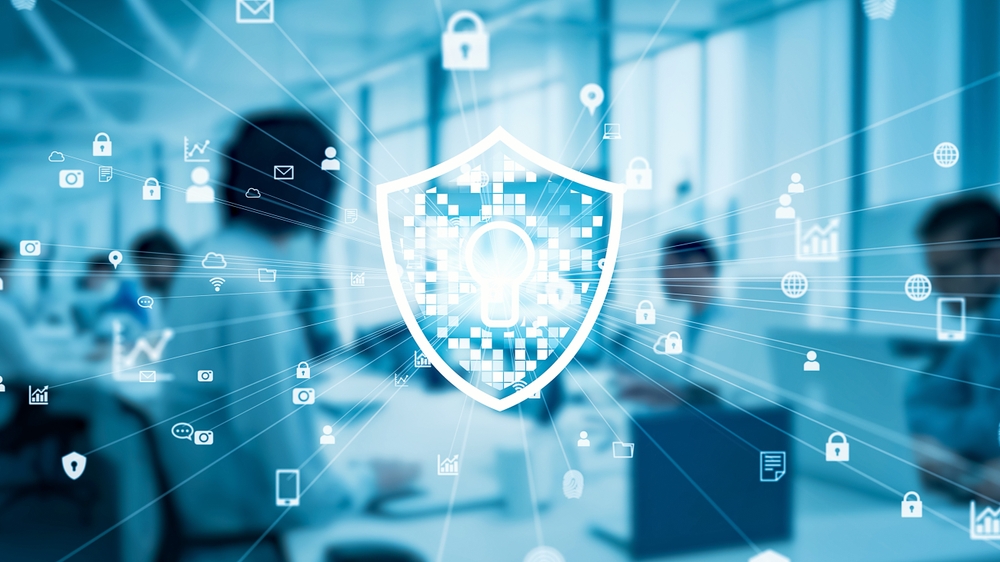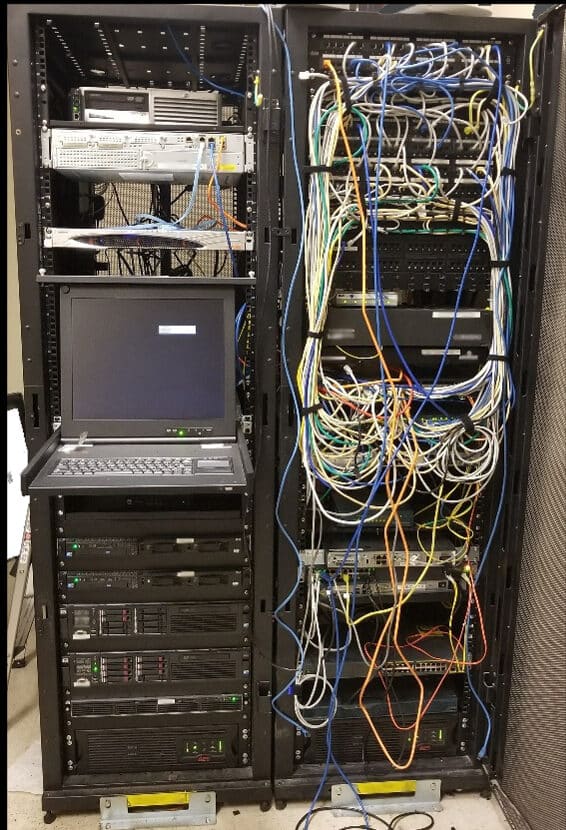Make sure you are using the best and most up-to-date practices for endpoint detection and response to cyber attacks on your network.
The endpoint detection and response market will reach at least $5.75 billion by 2026. The process protects users who access networks through their phones, laptops, and other connected devices.
Endpoint detection and response is a necessary process in a world where cybercrime has become a massive business.
Hackers earn $1.5 trillion every year, which is 3 times larger than Walmart’s revenue. The $6 trillion in damage they cause would make it the 3rd-largest economy in the world after the US and China.
This impressive payday means that cybersecurity will remain a threat for as long as humans continue to use technology. The problem only increases as new, more complex threats arise.
Identifying and fixing the damage that these attacks cause is the best way to protect yourself. Read our guide to learn what endpoint detection and response are and how to implement them in your business.
What Is Endpoint Detection and Response?
An endpoint device serves as a user endpoint in distributed computing systems. Examples include desktop and laptop computers, tablets, and smartphones.
Businesses need a way to protect these vulnerable parts of their networks.
Endpoint detection and response or EDR uses a central data repository to analyze endpoint vulnerabilities and respond to threats. It focuses on securing endpoints, and this protects all other network users.
Certain businesses may not see the importance of endpoint detection and response. They may believe that they only need antivirus software to protect themselves.
Antivirus solutions only block threats as they attack your devices. EDR blocks threats before they reach you. Using both is the best way to protect your business and react to evolving threats.
The Endpoint Detection and Response Process
Understanding the process of EDR is one of the best ways to know how you should implement it in your business.
The 3 most important tasks are:
- Monitoring and collecting data in real-time
- Establishing threat patterns based on data
- Proactively and immediately responding to and remediating threats
These goals are achieved by following a specific 6-step process.
The first part of the process is EDR installation. This is when the software is installed on all connected devices. The next step is behavioral analysis. Algorithms use machine learning to analyze user behavior and look for anything suspicious. The next step occurs if the EDR software detects malicious activity. It determines if there is actually a threat and responds accordingly. The next step is breach point identification. It uses algorithms to determine what the breach will target and how the hacker could perform it. The next step is data consolidation. It categorizes all available information to determine how to mitigate the attack. The final step is incident review and remediation. The EDR software notifies end-users or the IT department about the attack and either recommends options to remediate it or performs them themselves.
Benefits of Endpoint Detection and Response
The benefits of EDR are undeniable. They extend beyond simple threat prevention and also provide easy, automated data access and management.
Threat Response
Companies fail to use threat protection on 95% of their folders, and 70% of all security breaches begin on endpoint devices.
EDR allows you to analyze and collect data at all times. Looking at patterns in suspicious activity allows you to find threats before they happen. Once you do, EDR makes it easier to respond to them.
EDR also helps you restrict access to keep out suspicious users.
Protecting against threats is essential to any business. Malware attacks cost $2.6 million and 50 days of lost time. Data breaches cost $3.86 million, with 197 days for identification, and 69 days for breach contention.
Easy Access
The best way to prevent and respond to threats is to get information about them as quickly as possible. This can be difficult when security systems don’t provide easy access.
EDR consolidates all of your security functions and the data they collect in one place. This allows for remote access and improved analysis and data collection for better threat response.
Automation
Individuals create 1.7 megabytes every second, and global Internet users create 2.5 quintillion bytes of data every day. This is far too much for any business to search through themselves.
EDR software solves this problem through automation. It does the work of several members of an IT department at once, saving businesses time and money.
Best Endpoint Detection and Response Architecture and Operations Practices
EDR software makes it easy to collect and manage data, but your business still needs to use what it collects to secure its networks.
An ineffective EDR process leaves you open to hacker attacks. Each successful breach will cost you money and time.
All businesses can improve their endpoint detection and response by creating a plan, monitoring their networks, being reactive and proactive, using the right software, training employees, and using managed IT.
Start With a Plan
Endpoint detection response is more than an IT issue. It affects the entire organization because every department must have its data protected.
If you don’t already have a plan for how your organization will handle endpoint detection and response, create one. Consider:
- What software to install
- Whether to use in-house or managed EDR
- How to prevent threats
- How to respond to threats
Once you have an idea of how you’ll handle these aspects, inform all of your employees about the plan and ensure they follow it. Don’t be afraid to update your process as your needs change.
Monitor at All Times
Endpoint detection and response software is like a security guard standing over your network, watching for trespassers and suspicious activity. Unlike human guards, it can work 24/7, and you need to make sure it does.
Leaving an endpoint device unprotected for even a moment puts your whole network at risk. Make sure that you’re always collecting and analyzing the security data you need.
Be Proactive and Reactive
Remember that EDR stands for endpoint detection and response. It involves detecting and responding to threats, which means it must be both proactive and reactive.
Proactive EDR is focused on finding and preventing attacks before they happen.
Sewing up holes in your network is essential to prevent attackers from getting through. It also saves you from having to go through the expensive, time-consuming process of remediation.
If an attacker does get into your network, it’s time for a reactive EDR response. The faster you can recover any data they’ve stolen or cover up any security holes they’ve created, the sooner you can get back to work.
Use Microsoft Defender and Other Helpful Tools
There are several different types of EDR software to choose from. They’re great on their own but can work even better if you add additional tools.
Try Microsoft Defender.
Benefits include:
- Full control over system security
- Assessment of the network’s current state
- Protection from malware, viruses, and spyware.
- Compatibility with other Microsoft and antivirus products
Microsoft Defender uses several types of technology to provide these features.
Endpoint behavioral sensors are embedded in and process signals from your Windows operating system. They send data to a private cloud where you can access and review it.
Threat intelligence capabilities help analyze what tools and techniques attackers are using against you.
Cloud security analysis protects data in other Microsoft products that use the cloud, such as Microsoft Office 365. Microsoft Defender is the only tool you can use as part of your endpoint detection and response strategy. Make sure you get the best technology for your business needs.
Implement Endpoint Training
If you rely on your in-house IT team, you can’t afford to forget security and endpoint training.
The average employee has access to over 1,000 sensitive files. Their activity may put this essential data at risk.1 out of 3 risks running malware on a work computer. 1 out of 7 gave confidential information to potential hackers. 1 out of 10 entered account information in fake authentication forms.
Teach your employees the right way to use their accounts. This type of security awareness program can reduce risky behaviors by at least 70%.
Get Managed Endpoint Detection and Response
You don’t have to put the entire burden of endpoint detection and response on yourself or your IT team. You can hire someone else to handle it for you. They’ll bring their experience and effective service to your business.
Try managed endpoint detection and response. It’s one of several types of managed IT services you can choose from.
Benefits include:
- Expertise
- Reduced costs
- Increased security
- Increased scalability
- Reactive and proactive responses
- Remote and on-site support
- Reduced training
These are only a few ways to increase the effectiveness of your endpoint detection and response. Following these guidelines will help protect your business from attacks.
Where to Find Endpoint Detection and Response Services
Hackers are making massive amounts of money by stealing business information, and their attacks continue to become harder to prevent. Now is the time to ensure they can’t access your network.
Endpoint detection and response analyzes the behavior of every device, allowing you to respond to threats quickly. It involves consistent monitoring, employee training, and the right tools.
Consider managed services that can handle the complex process for you. Their expertise and support will help you fight against hackers.
Bridgehead I.T. has all the managed cybersecurity solutions you need. Check out our endpoint detection and response services today.

Endpoint detection and response or EDR uses a central data repository to analyze endpoint vulnerabilities and respond to threats. It focuses on securing endpoints, and this protects all other network users.


